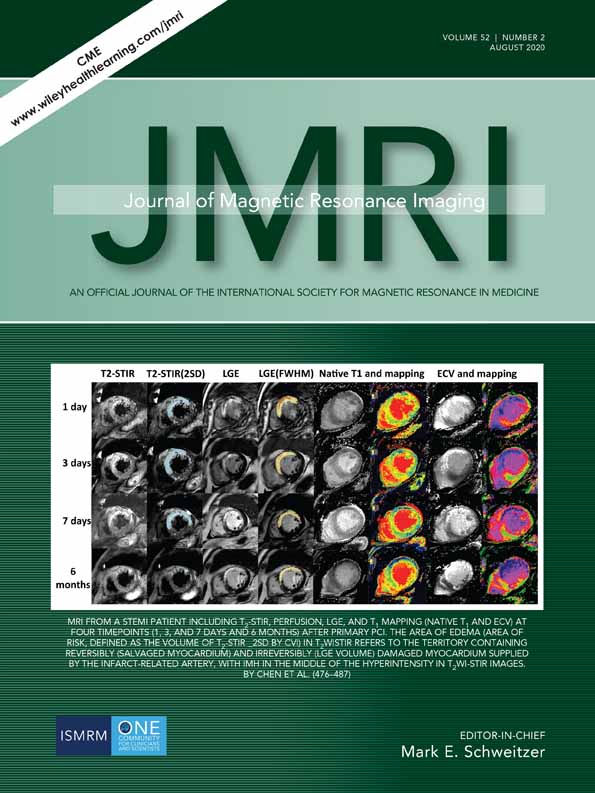Children With Acute Myocarditis Often Have Persistent Subclinical Changes as Revealed by Cardiac Magnetic Resonance
Abstract
Background
Many children presenting with myocarditis may not fully recover and have long-term complications, including dilated cardiomyopathy. Magnetic resonance imaging (MRI) has a potential for early detection of persistent changes with long-term implications, but is not performed routinely in the monitoring of myocarditis.
Purpose
To monitor adolescents who present with acute myocarditis using MRI and routine diagnostic tests over the short- to mid-term.
Study Type
Prospective.
Population
Eighteen consecutive adolescents (median age 15.5, interquartile range 14.8–16.9 years, 78% male) with acute myocarditis.
Field Strength
A 3T scanner including cine steady-state free precession (SSFP), dark-blood T2-weighted (T2W) images, and late gadolinium enhancement (LGE).
Assessment
The diagnosis of acute myocarditis was based on clinical symptoms and signs and MRI criteria (cine, T2-W images, LGE). Follow-up MRI was performed after median 7 months (range 6–9 months). Other routine diagnostic tests included electrocardiogram (ECG), high-sensitivity troponin levels, transthoracic echocardiography, and Holter monitoring.
Statistical Tests
Fisher's exact test, Wilcoxon test for paired samples, Mann–Whitney test for independent samples, Kruskal–Wallis test.
Results
At baseline, 17 patients (94%) had elevated troponin levels and/or ST-T changes on resting ECG; ECG showed depressed left ventricular ejection fraction (LVEF<50%) in four patients (22%). At follow-up there was a complete recovery in 16 patients (89%) observed with routinely performed tests, with two cases of persistent ventricular arrhythmia. Despite normal left ventricular volume and LVEF, MRI disclosed ongoing active inflammation in five patients (28%), healed myocarditis with persistent scars in eight patients (44%), and complete resolution of initially observed changes in five patients (28%).
Data Conclusion
In children with acute myocarditis, despite normalization of other routinely assessed parameters (including LVEF), there is a high prevalence of persistent MRI changes showing ongoing disease or remnant scars at follow-up. MRI may allow early detection and prevention of long-term complications of myocarditis in the follow-up care of children with acute myocarditis.
Level of Evidence: 2
Technical Efficacy: Stage 3
J. Magn. Reson. Imaging 2020. J. Magn. Reson. Imaging 2020;52:488–496.
Conflict of Interest
None.




